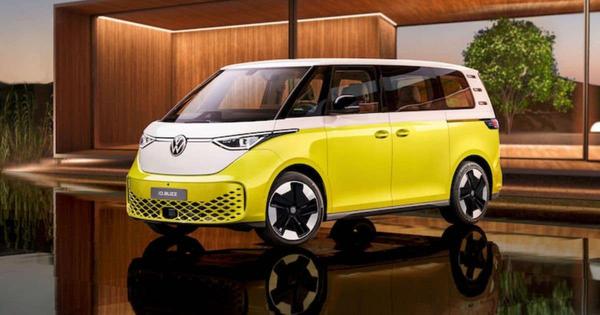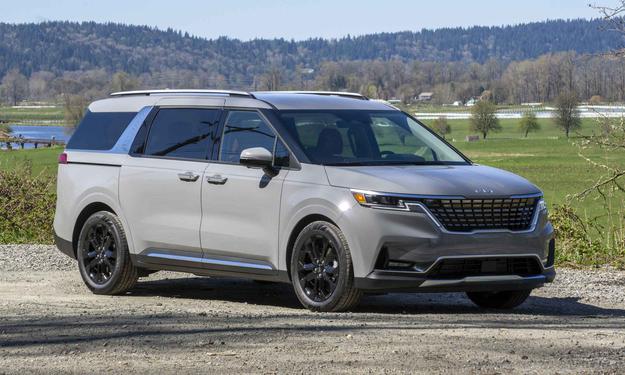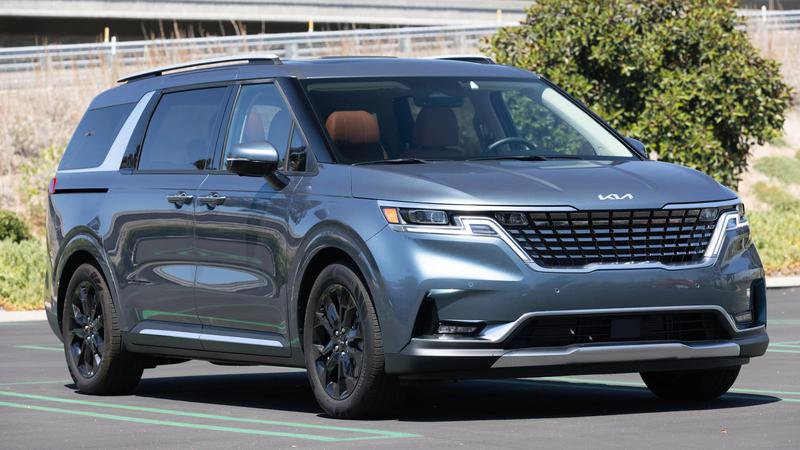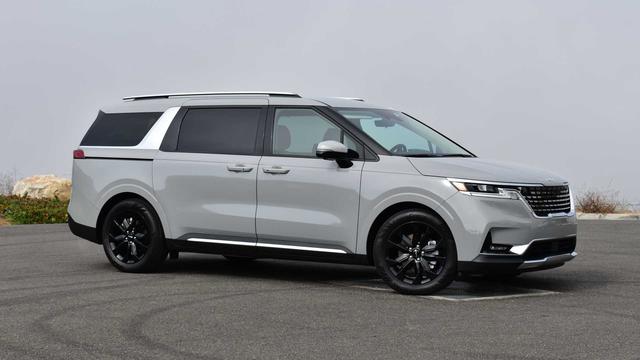Volkswagen is betting an electric vehicle with Throwback Thursday appeal and modern features will earn its new “ID” EV sub-brand a place in American hearts and driveways.
The good news: Initial photos of the VW ID Buzz made just about everybody smile.
The bad news: It’s a minivan, arguably the least exciting type of vehicle.
Consciously styled to resemble the VW Microbus that became a countercultureicon in the 1960s, the ID Buzz goes on sale in Europe this fall, America in 2024. VW plans to sell both cargo and passenger models.
The Buzz’s nostalgic looks include a front end reminiscent of a smiley face, upright profile, two-tone paint and windows reminiscent of the Microbus.
The Buzz shares its structure and powertrain with the VW ID4 SUV. "ID" is the sub-brand VW created for its new family of EVs. VW will build the Buzz in Hannover, Germany. Most of the EV’s components are also built in Germany, many at VW plants as the automaker tries to manage job losses due to EVs’ lower parts count and labor requirements.
There’s no word yet on prices or driving range.
Bigger model coming to the U.S.
VW will build both passenger and commercial versions of the Buzz. The initial European version measures 185.5 inches long — around 20 inches shorter than typical of American minivans — and seats five. Its 117.1-inch wheelbase promises generous cargo space for the commercial version likely to account for the most sales in Europe. A stretched version — wheelbase and other dimensions TBA — is scheduled for production in 2023.
The U.S. version will get the longer wheelbase and presumably offer a third row of seats to make it competitive with family haulers like the Chrysler Pacifica, Honda Odyssey, Kia Sedona and Toyota Sienna.
VW will show the U.S. model of the Buzz in 2023.
More from Mark Phelan:2022 Buick Enclave adds comfort, safety features and a shifter I could do without
6 Detroit automaker vehicles top best resale value list: How they stack up
A single electric motor drives the rear wheels. It generates 201 horsepower and 229 pound-feet of torque. The Buzz shares its 82 kWh lithium-ion battery and electric motor with the ID4.
The EPA estimates a rear-drive ID4 can go 280 miles on a charge. It’s not unreasonable to expect similar figures from the Buzz, though its blocky profile is likely to increase wind resistance to the detriment of driving range. The Buzz’s weight — also TBA — will play a significant role, too.
Using DC fast charging — VW doesn’t specify the level, but it can handle up to 170 kW — the Buzz’s battery can go from 5% to 80% charge in 30 minutes. VW didn’t offer charging time estimates at 240 volts, the level most EV owners use at home.
Different battery sizes and power outputs are in the works.
VW developed the MEB architecture that underpins the Buzz and 4 to support a wide range of EVs. As with most advanced EVs, the battery fits under the floor, contributing to a roomy interior.
Sustainable, ‘vegan’ interiors
The passenger model’s interior features front bucket seats and a rear bench seat. A six-passenger version of the short-wheelbase model will come later and feature three rows of seats.
Controls appear to include a 10- or 12-inch touch screen and mechanical sliders for volume and temperature.
There are also steering wheel controls for volume, tuning, voice recognition and adaptive cruise control. There are eight USB-C ports and wireless device charging.

Euro-spec models will feature leather-free interiors that use recycled materials for upholstery, headliner and floor coverings. Interior materials for the U.S. may vary.
A removable center console provides storage.
VW’s “ID light” across the base of the windshield illuminates to complement directions from navigation and safety alerts.
Driver assist features include:
Those meddling kids and their dog!
While baby boomers remain morally certain they’re always the smartest, most interesting people in the room, the Buzz’s attempt to win favor by evoking images of tie-dyeshirts and Grateful Dead concerts could be a stretch.
When I asked my Gen Z focus group —better known as my niece Emily and nephew Cormac — their reaction to the ID Buzz’s styling, the response was immediate:
“Looks like it’s trying to be a modern Mystery Machine. LOL”
Ruh, roh.
I’m not sure anybody in VW’s German styling department grew up watching "Scooby-Doo" cartoon heroes save the day from greedy grownups and weird phenomena, but their Mystery Machine was a mashup of U.S. panel vans, not a Microbus.
“It’s all good,” said IHS Markit senior analyst Stephanie Brinley. “A product that blends an emotional response with a new technology can help it gain acceptance.”
We’ll know VW got the message if the Buzz’s two-tone paint schemes grow to include the Mystery Machine’s light blue and electric green. And maybe a couple of flower-power decals.
VW ID Buzz at a glance
All figures are for Euro-spec, short-wheelbase model.
Electric rear-wheel drive passenger and cargo van
Length: 185.5 inches
Wheelbase: 117.6 inches
Width: 78.1 inches (excluding mirrors)
Height: 76.3 inches
Cargo space: Passenger: 39.6 cubic feet; cargo: 137.7 cubic feet
Power: 201 hp; 229 pound-feet of torque
Battery capacity: 82 kWh
Charging time: TBA
Range: TBA
Max charging current: 170 kWh DC
Top speed: Electronically limited to 90 mph
Turning circle: 36.4 feet
Assembly site: Hannover, Germany




